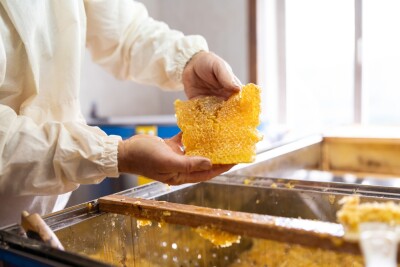A Guide to Dosing Herbal Medicine

The most important aspects to consider are the patient’s age, weight, and sensitivity. Are you aware of any allergies or adverse reactions that the patient has had against any foods or plants, and if so, make sure you are potential herbs to avoid in case of sensitivity to a plant family? This is common with the ragweed and daisy families. It’s important to explain to patients that they need to start with herbs slowly but be specific around how to incrementally increase the dose until they get to their full dose. Explain that they might notice some initial changes in energy or symptoms but warn them to discontinue if they feel any significant adverse side effects at any point.
If a patient is on medications or supplements, the timing of their herbal dosages needs to be considered in order to avoid potential interactions. If the patient has assimilation issues, consider what form would be best to use.
Factors which affect dosage including ascertaining whether you are using an herb for nutritional or tonic purposes on an ongoing basis, rather than medicinal purposes which tend to have a shorter duration. If the herbal medicine is being used for an acute situation, the dosing will be smaller and more frequent.
The patient needs to be made aware of the need to use herbs in their recommended dosages and for the recommended duration in order to achieve results, and fully resolve infection. If the herbs being used are stimulating or energizing and might affect sleep, ensure you write on the label when the last dose needs to be taken by.
Dosing Powders
For powders, I usually recommend 1-2 teaspoons daily in plant milk for chronic conditions, as the extracts are usually better absorbed with fat. This is based on a whole herb powder. If I am using a powder extract, I use a smaller amount as the phytoconstituents will be at higher levels and the product more concentrated.
Dosing Tinctures
For tinctures, I have always found the simplest way to dose a patient is on a basis of 1 teaspoon three times a day, or 2 teaspoons twice a day. For acute conditions, I often dose 1 or 2 teaspoons between 6-8 times a day. For sleep formulas, depending on whether I am including restricted herbs, I may recommend 1 to 4 teaspoons at night. My dosing schedule is based on a formula containing primarily fluid extracts, and herbs made on a 1:2 or 1:3 herb-to-menstruum ratio.
I always recommend starting with a drop dose of ¼ teaspoon daily or a dropper if I am dispensing in a dropper bottle, and gradually increasing the dose to monitor for any reactions. This is particularly important for sensitive patients.
Depending on the herb to menstruum ratio, your herb supplier in many cases should be able to advise you on the suggested weekly dose range for the herbs you want to include in a blend, otherwise you can check your Materia Medica.
Dosing Infusions and Decoctions
I usually recommend 1-2 tablespoons of crude herb per pot or 1-2 teabags taken three times a day for a medicinal dose. As fresh plants contain a higher water content, 3 tablespoons of fresh herb can be substituted for 1 tablespoon of dried herb.
Dosing for Children
In the Principles and Practice of Phytotherapy: Modern Herbal Medicine, author Kerry Bone recommends using Fried’s Rule to establish the dose for children under 2 years old. This is calculated as follows:
(age in months/150) x adult dose = child dose)
Or
weight in kilograms + 30 if the child’s weight is over 30 kilograms.
Labeling the Bottle and Maintaining Clinical Records
Ensuring correct labeling of an herbal product is crucial for safety and to adhere to applicable state and federal law, as well as recording this information for the clinic, to ensure correct records and kept.
Personalized herb blends should always include a description of the product, the name of the patient, the date, a full ingredient list in Latin, the amount dispensed and compounded, the duration of the prescription, dosage instructions, storage instructions, and warnings to keep out of reach of children or if there any potential medication interactions relevant to the patient. If the formula contains alcohol, ensure the patient is aware of the percentage.
It is advisable to include additional documentation on potential allergens, for example, plants in the Apiaceae family, which includes carrots, celery, and fennel, as well as potential side-effects which might occur. The practitioner or clinic’s contact details should also be included.
Dosing instructions should be very clear, such as with food or away from food, and to not exceed dosage recommendations on the label. If there are any specific instructions around dosage timetable, they should also be included, for example, a blend containing energizing or stimulating herbs might not be dosed at night, or a sleep mix will not want to be used during the day.
Editor’s Note: This is an excerpt from the e-book, An Introductory Guide to Herbal Medicine. To access the full text, click here.




















SHARE